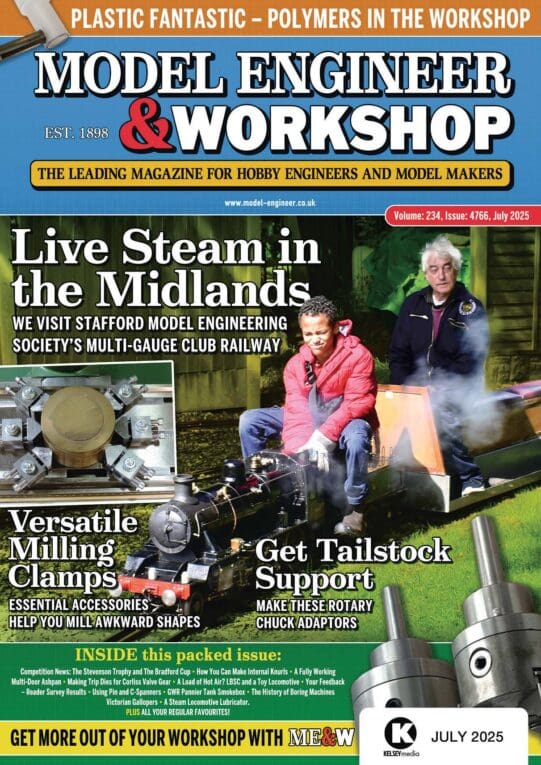On an Imperial lathe.
This won’t work for all threads, of course, and not over long thread distances.
Assuming you don’t need a long length of thread that can lead to significant accumulated errors, and can finish the work with a die, compare threads to find the nearest pitch or TPI. (The respective diameters do not matter.)
As this example:
Recently I cut an M8 thread on components turned on a Myford ML7 with gearbox, all set for Imperial threads.
Careful comparison of the Zeus Book tables revealed its 1.25mm pitch is very close to 20tpi.
Set the lathe to 20tpi, use a 60º tip (as for 1/4″ UNC), cut a few “thou” shallow, finish with a carefully-adjusted die.
“Why not” , you may ask, “just use an M8 die straight off in a tailstock die-holder?”
Simple: the commercially-made die-holder set I have does not fit tightly enough in the tailstock, it is a clumsy contraption to use, and trying to cut anything fatter than perhaps 4BA on sight with it is an utter pain. Also, more importantly, I needed the thread to be concentric with the part’s plain shank, turned with tailstock support.
NB: It won’t work so well for other pitches. Let’s examine the first few of the most common M-coarse threads more likely screw-cut rather than direct die use. The integer part of most of the TPI values is used among the inch-size threads but for this purpose should only be used over short lengths like stud and pin ends, and from half- to two-thirds depth as a “roughing cut” for the metric die. For closer analysis make comparative plots.
M6: 1mm pitch = 0.039″ = 25tpi almost.
M10: 1.5 = 0.0591 17tpi.
M12: 1.75 = 0.0689 14.5tpi
M16: 2.0 = 0.0787 12.7
M20: 2.5 = 0.0984 10.16
M24: 3.0 = 0.1181 8.47
Coming too close to the leadscrew pitch for comfort.
Nigel Graham 2.







